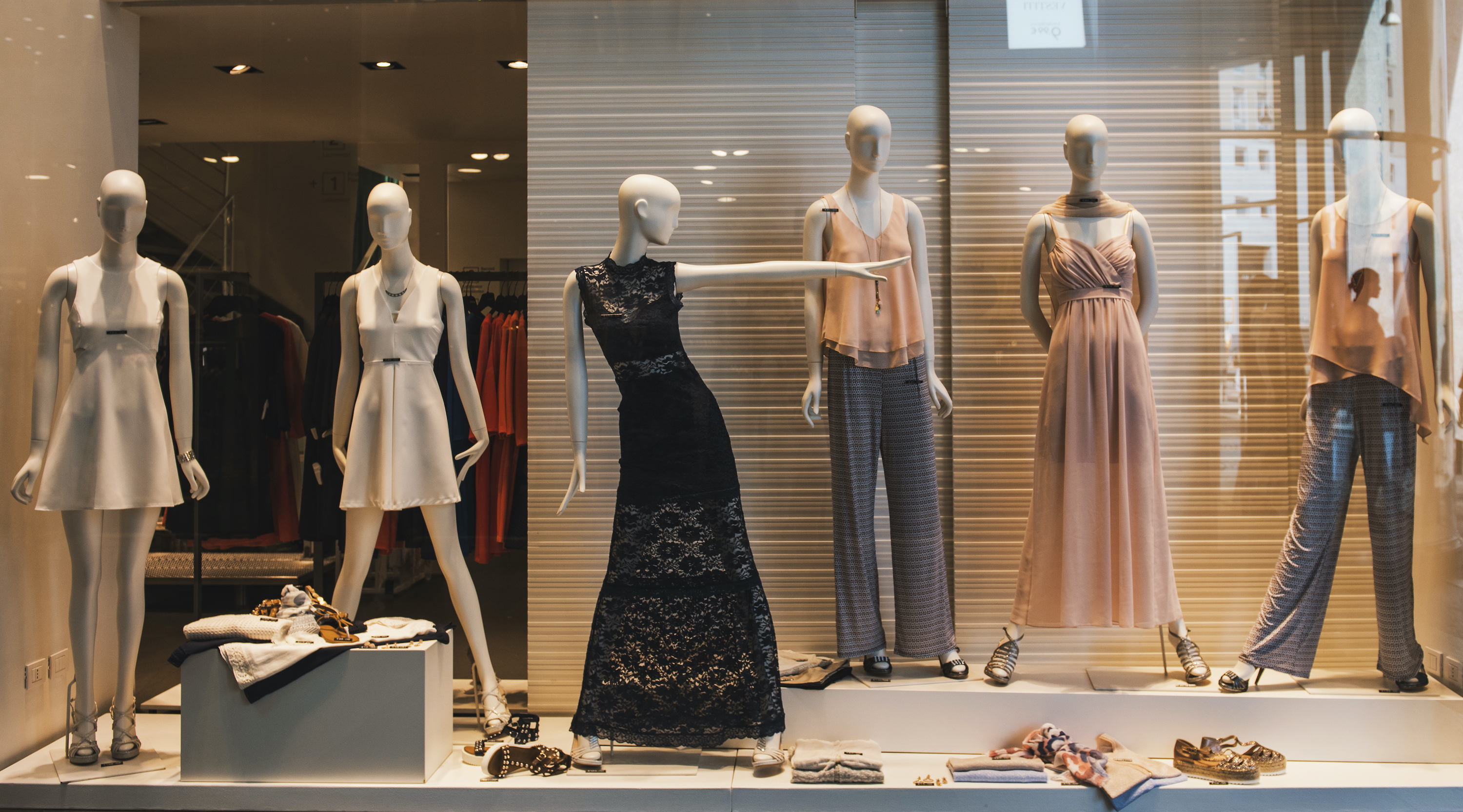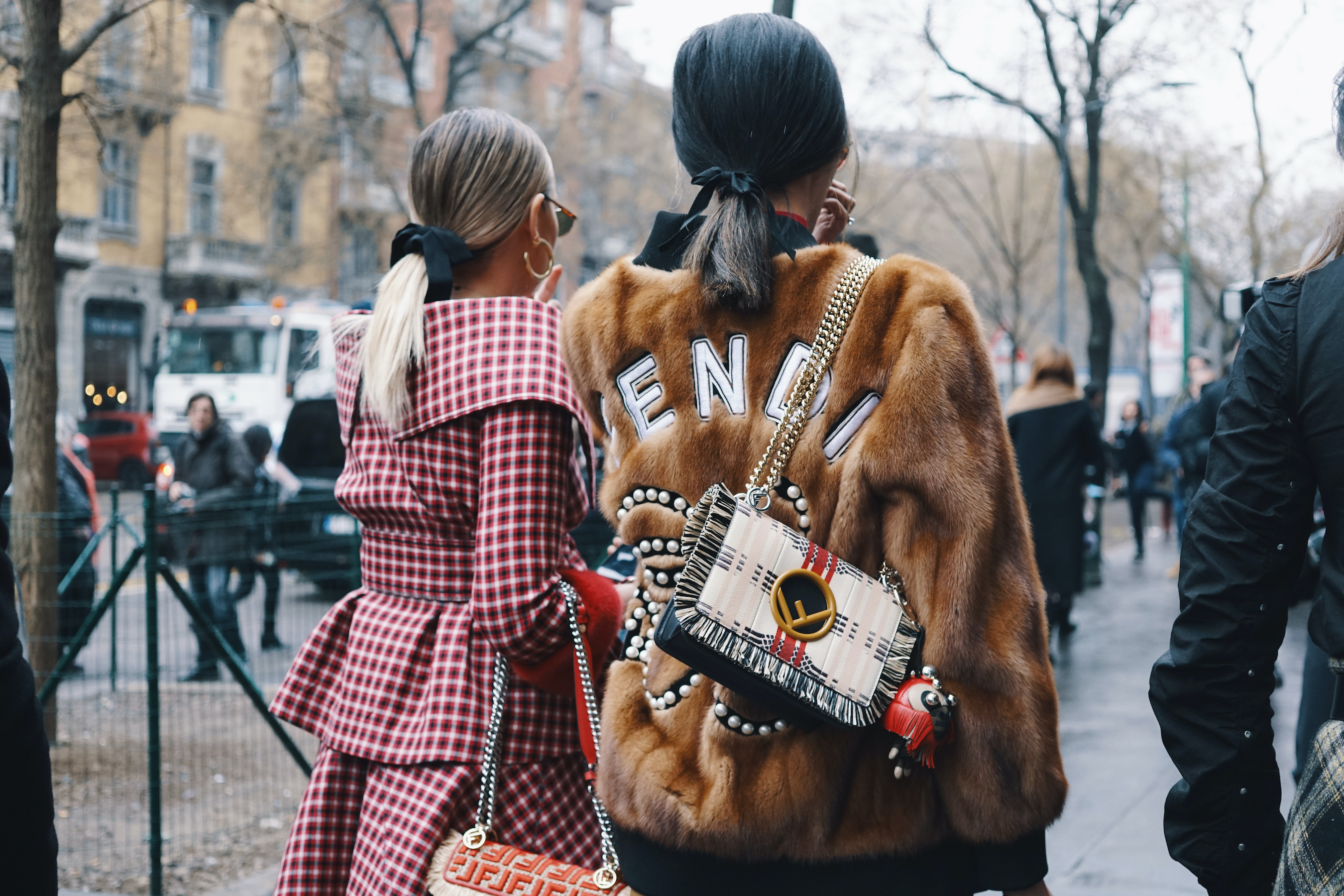When we talk about fashion, we often imagine extremely thin women, European and white, wearing expensive clothes. We might view fashion as a form of elite consumption – but we are all dressed, and everything we wear has passed through human hands.
I’m interested in thinking about fashion as a global network that involves both high fashion and art; one which involves the garment workers in Indonesia and Bangladesh and the people who are tending to cotton farms in Kazakhstan; the dyeing that happens in India; the young women who are working in the department store that you will go in next week. It is an enormous global system that involves us all, which asks us questions about how we are related to one another. So, we must stop thinking of fashion as an elite form of consumption, and start thinking of it as a broader network in which we are all implicated. This is one of the ways to try to take fashion seriously. It seems to me that fashion and dress assert themselves again and again in our society, in our culture and in some of the most crucial issues of the day.
Imitating animals
One of the very particular things I’m thinking about at the moment is animal skins: the ways that we use fur, suede and leather in our everyday dress – you are very likely to be wearing leather shoes right now – but also the ways that we imitate animal life in our clothes. Consider a fabric like houndstooth, a jagged textile design that originates in the Scottish Lowlands, based on the canines of canines; or herringbone, a skeletal design often on wall fabrics that mimics the skeleton of a fish. We’re often imitating animals, if not using animal skins, and that poses a question about our relationship to animals.
This is really important at the moment for philosophy and the humanities in general, which is currently undergoing an animal turn in its thinking. This animal turn is an attempt to overcome the anthropocentrism of academic scholarship and intellectual work and to shift the place of humans from the centre of the picture and to understand our relationship to our planet and to other creatures in a more holistic way. In fashion, this is happening in a very specific way.
Underneath the skin
I’m thinking a lot about the ideas that are underpinning our use of things like fur and suede.
In one of his essays in 1936, the German philosopher Walter Benjamin describes how a pair of leather gloves stir in him a horror akin to the animal itself, because in that moment, we think that the animal is the animal, and we are some other civilised creature. But having animal skins next to us should remind us of our own savagery and the ways that we use and appropriate animals for our own well-being and luxury.
When Benjamin is thinking about the savagery of human beings, he’s being persecuted as a Jewish person fleeing the Nazis. He’s thinking about the savagery that lies underneath the skin of human beings. And so our relationship to animals is much more complicated than we might think.
There are lots of philosophers who help us think about animals. Montaigne, the French essayist, has a famous cat experiment where he is struggling to work out whether he is playing with his cat or his cat is playing with him. This is a question about agency and control, about who’s in charge. The French Algerian philosopher Jacques Derrida has a version of this in his book The Animal That Therefore I Am. He is undressing in front of his cat and realises that he is naked next to his already naked cat, that animals are naked all the time and we don’t reflect on it, and that humans are perhaps the only animals that dress. That therefore means dressing is a very specific and particular activity, one which makes us human.
In philosophy, we have an idea that the truth is naked, that we see it in the light of day, and that to dress things up and to disguise things is somehow a deception. There is a great deal of suspicion around ideas of appearance and masquerades in traditional forms of philosophy, but I want to suggest that there could be something really interesting in thinking about the ways that we appear, the ways that we masquerade and the ways that we present ourselves.
The 20th century American writer and philosopher Susan Sontag thinks about the difference between style and substance and how we value substance over style. For her, style is a form of substance. Maybe the way that we appear is the way we are.
I’m really interested in thinking about how we could attend more closely to how we dress. Lots of us view our dress as an expression of our identity. Perhaps you wear your football team’s T-shirt to indicate your love of your team. But I think our relationship to our clothes has to be much more complicated than that. It can’t be simply that the sum of who we are is expressed in the Ramones T-shirt that we wear on Thursdays. One of the challenges for fashion and for philosophy is to try to think harder about our identity and the ways that we dress. For me, I’m as much interested in the things that we don’t say in our dress, the things that we hide, if it’s possible even to conceal the kinds of things we are and have experienced in our dress.
Dress is a visual form, and so we are constantly making our interior life available – but perhaps we’re always concealing things, too. That means we have to think about dress and dressing as a much more complex endeavour and practice.
The masks we choose to wear or not
Right now, we’re seeing dress and clothing emerge in many of our most crucial arguments about identity and politics. We only need to consider the very heated discussions about trans-identity, for which dressing and the conventions of gender have an important role to play. During the current COVID-19 pandemic, in 2020, there is a very public debate about the moral obligation to wear masks and the civil libertarian debate to be free to not wear masks.
The French philosopher Emmanuel Levinas talks about the role of the face as a way of engaging ethically with other human beings, although he means it metaphorically. If we conceal our faces with masks, does that mean that we are not able to engage with one another in an ethical and important way? I would say that it means that we can – but the question of how we live and the ways we engage with one another so often comes back to the garments and clothes we wear, the masks we choose to wear or not and the veils we wear or not.
The veil, which conceals
Ironically, one of the most visible items of clothing in political and public debates is the veil, which conceals yet draws so much conversation and dispute. The veil has become a symbol of the complicated, fractious relationship between Islam and Europe, but the veil can mean multiple things. It need not only be a symbol of Islam for many of the women who wear it but an item of fashion. It is part of their dressing apparatus and is a symbol of their fashionability. In many ways, it is completely agreeable with modernity. You can buy very expensive veils and you can fashion them in all sorts of ways, so we have to find a more sophisticated understanding of the veil in different registers – not only about Islam, but about us, in all forms of experience and identity.
Many of us have experience of wearing a uniform, whether at school or at work. Uniforms are functional: very often, they train our bodies to operate in particular ways and particular circumstances. If you wear a tie, it will stiffen your neck and straighten your spine. They work upon our body.
The French philosopher Michel Foucault talks about uniform in his account of a disciplinary society. He discusses the ways our bodies are trained to behave in our societies – in the army, in school or wherever you wear a uniform.
However, uniforms have had a different resonance during the COVID-19 pandemic. Many of us have had the luxury, the privilege, of being able to work from home, but many key workers – doctors, nurses, supermarket workers, road cleaners – have been wearing their uniforms every day, going out to do their jobs to maintain the everydayness of our everyday lives in this extremely unusual and traumatic period. So, we might reflect on uniform again. We might prize the people who wear a uniform, who do essential work for us. It might be a moment for us to rethink the value of the uniform.


